What the Vikings did on the Island of Lindisfarne, England
Return to the scene of a brutal medieval crime on the Holy Island of Lindisfarne.
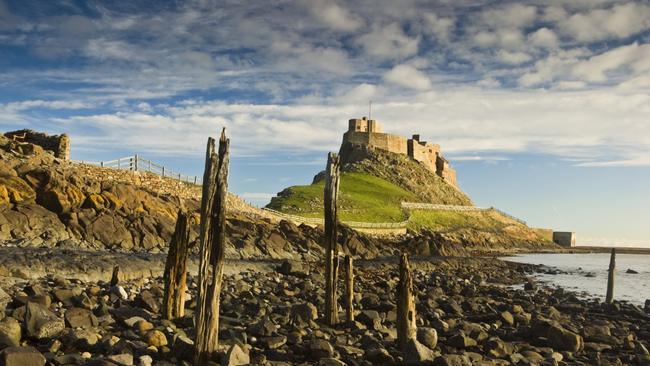
The history of medieval Britain is not so much one damn thing after another as 17 damn things at once, in threads interwoven like Celtic knotwork. It’s confusing, often brutal and increasingly unreal the further back you go. It would be possible to spend a lifetime reading about it, but nothing makes it quite as real as taking off your boots and walking ankle-deep in the footsteps of saints and kings.
A combination of Year 8 history and Robert Westall’s strange novel The Wind Eye fuelled my fascination with the Holy Island of Lindisfarne. This windswept 5km sq of land in the North Sea, cut off from the mainland twice a day by fast-moving tides, was the highly atmospheric setting for the first Christian monastery in Anglo-Saxon Northumbria, founded by St Aidan of Iona in 635AD at the invitation of King Oswald.
It became the hub of Christianity in the north in the ascetic Celtic tradition, which came direct from the Holy Land, and a rival to the Roman centre at Canterbury. Tensions over such matters as the date of Easter and monks’ hairdos culminated in the Synod of Whitby, a contest for British Christianity won by the Romans.
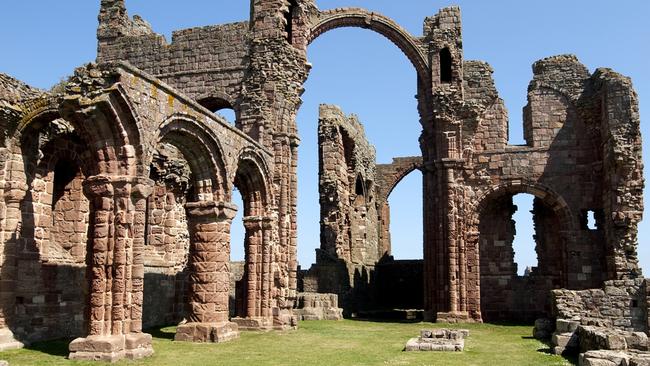
Once an austere place, with the ascetic St Cuthbert as its most renowned bishop, by the late 8th century the monastery had become a place of importance, producing the stunning Lindisfarne Gospels, attracting relic-tourists and accumulating great wealth. For those reasons it became the victim of the most famous and supposedly the first Viking raid on Britain, on June 8, 793, in which the heathens “miserably devastated God’s church in Lindisfarne island by looting and slaughter”, in the words of the Anglo-Saxon Chronicle.
Simeon of Durham wrote that these pagan robbers and slave-traders “killed some of the brothers; some they took away with them in fetters; many they drove out, naked and loaded with insults; and some they drowned in the sea”. It’s an image that lingers, and the famous (perhaps apocryphal) prayer, “A furore Normannorum libera nos, Domine – From the fury of the Northmen deliver us, O Lord” – still raises goosebumps.
Today a rather extraordinary letter hangs on the wall of St Mary’s Church on Holy Island, from the bishop and dean of Nidaros Cathedral in Trondheim, Norway. Written with a “deep sense of humility” in 1993, 1200 years after the raid, it commemorates “the event of 793 and the sacrifices of the monks of Lindisfarne with contrite hearts”.
Also in the church is a striking modern wooden sculpture, life-size, depicting monks carrying Cuthbert’s coffin. The tormented saint had died in 687 in his hermit’s cell on Inner Farne, one of the nearby Farne Islands, to which he retired when the hurly burly of life on Lindisfarne proved too much.
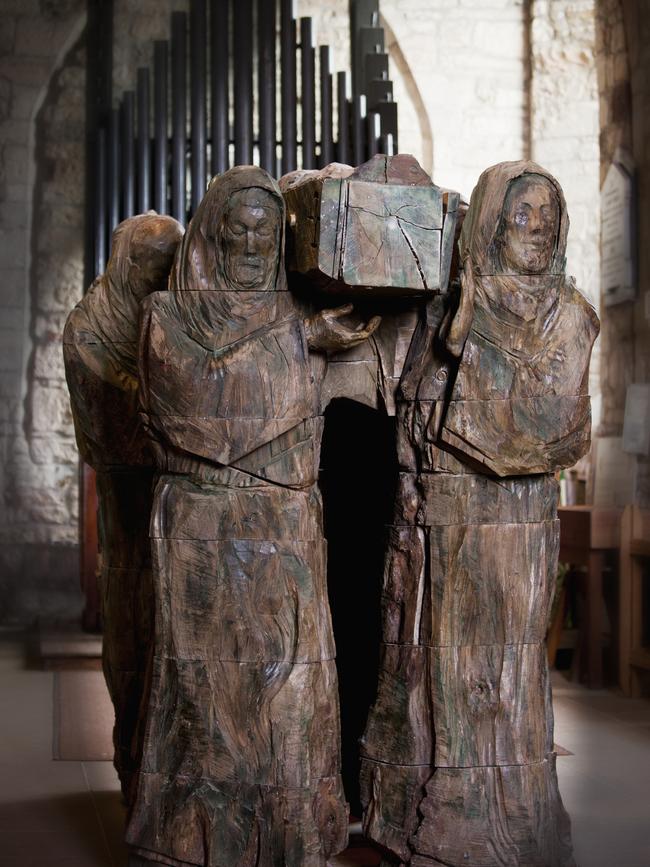
He wasn’t destined to rest in peace for quite some time. His remains were exhumed some years later and found to be “incorrupt”, forming the basis for a cult that claimed many miracles. In 875 the Viking-harried monks abandoned Lindisfarne and carried his coffin around for seven years, until they reached the place now called Durham, in whose grand cathedral Cuthbert lies to this day. Stranger yet, the head of Oswald was interred with Cuthbert’s remains (or at least, one of five heads claimed to be Oswald’s by the medieval churches that possess them; in the lucrative relic business a saint could never have too many body parts).
If it seems a bizarre pilgrimage for an atheist to make all the way from Sydney, it would be, on its own; but Covid hasn’t hit yet, we have just walked the 140km Hadrian’s Wall Path a little to the south, and it seems the perfect time to act on decades of curiosity.
Our excellent guide from the wall, Patrick Norris, founder of the walking company Footsteps in Northumberland, has escorted us to the tidal island barefoot, over wet sands and mudflats. This is the Pilgrims Way, the ancient path walked by those saints and kings.
The path across the seemingly endless flats is marked with tall stakes indicating just how much trouble we’d be in if we mistimed this 4km trudge. You can also drive there on a causeway; but either way, know your crossing times: despite plentiful signage, tourists are regularly stranded when the sea rushes in, requiring rescue.
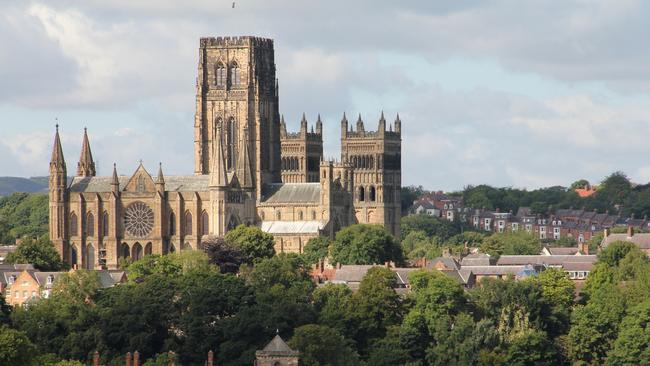
It’s a beautiful morning in early June, a day after the anniversary of that infamous raid, with blue skies and racing clouds above us and a warm layer of water on the sucking sand. A surreal sound carries on the wind: singing from a large seal colony in the bay.
Our boots back on, we visit the ruined priory and the church, then Norris takes us on a nature walk around the island, which is in the first burst of summer, with wild orchids that grow only here, bird life and deer foraging around the imposing castle.
Given to Aidan as a place of solitude, the island now buzzes with hospitality. A few fishing boats are moored in the calm blue bay where, on a June day perhaps just like this one, the marauding heathens landed in their fearsome dragon-prowed ships, and departed laden with treasures and terrified monks in chains.
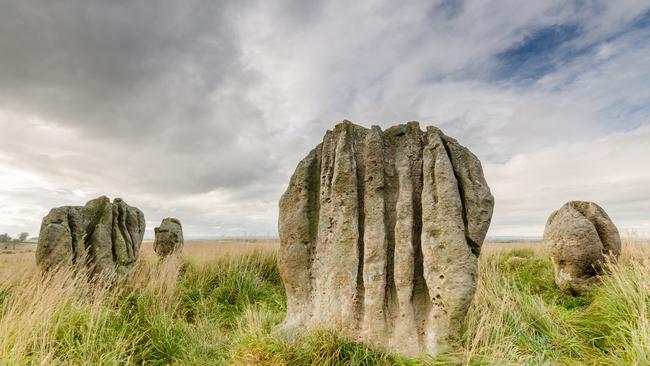
More to the story
The Northumberland coast, an Area of Outstanding Natural Beauty, offers plenty to see besides Holy Island and is a popular summer holiday destination.
Berwick-upon-Tweed is the nearest main town, a few minutes by car from the Scottish border. But we stay at Sandpiper Cottage, one of the Outchester & Ross Farm Cottages, a collection of charming self-catered holiday houses, comfortable and immaculately English in style, set on a promontory of farmland between Holy Island and Bamburgh Castle, with the beach an easy walk away. (Only the foolhardy would swim here before September without a wetsuit.)
On an imposing cliffside, Bamburgh Castle was the seat of power in Northumbria, and is implicated in numerous legends, including that of an exiled Sir Lancelot and a beautiful girl turned into a dragon – the Laidley Wyrme – by her jealous stepmother.
A short drive inland and a 1km walk through some private farmland will bring you to the Duddo Five Stones (previously Four Stones, till they re-erected one). Set on a hill amid rolling green fields, this imposing Early Bronze Age stone circle is a mysterious relic
of a barely imaginable time, and one you can have completely to yourself. Stand amid the heavily weathered sandstone liths and wonder what rituals might have been staged here 4000 years ago.
But what cannot be missed is a boat trip from Seahouses to the Farne Islands where you can see colonies of placid puppy-faced grey seals and thoroughly adorable puffins. These flamboyant little seabirds with their plump white chests and strikingly coloured beaks return to the islands in their tens of thousands every summer to breed, making burrows for their chicks, which, irresistibly, are called pufflings.
In the know
Footsteps in Northumberland offers guided walks that immerse the traveller in the history and beauty of this corner of England.
Ross Cottages are an 80km drive from Newcastle and 30km from the charming market town of Alnwick, with its castle familiar from the Harry Potter films and where delicious supplies can be had.
Penny Durham was a guest of Outchest & Ross Cottages and Footsteps in Northumberland.





To join the conversation, please log in. Don't have an account? Register
Join the conversation, you are commenting as Logout